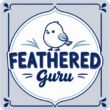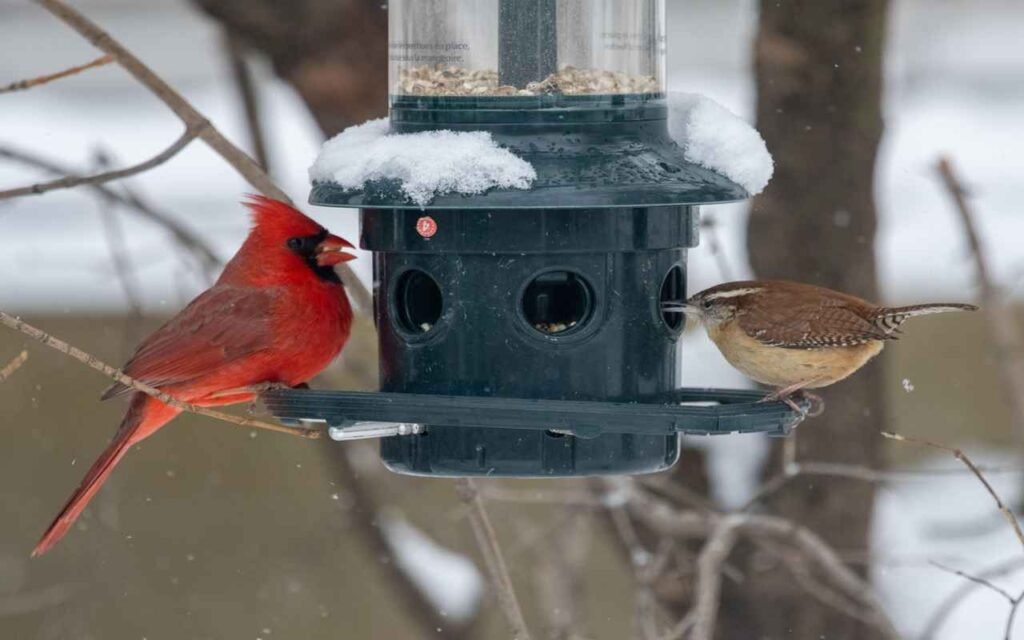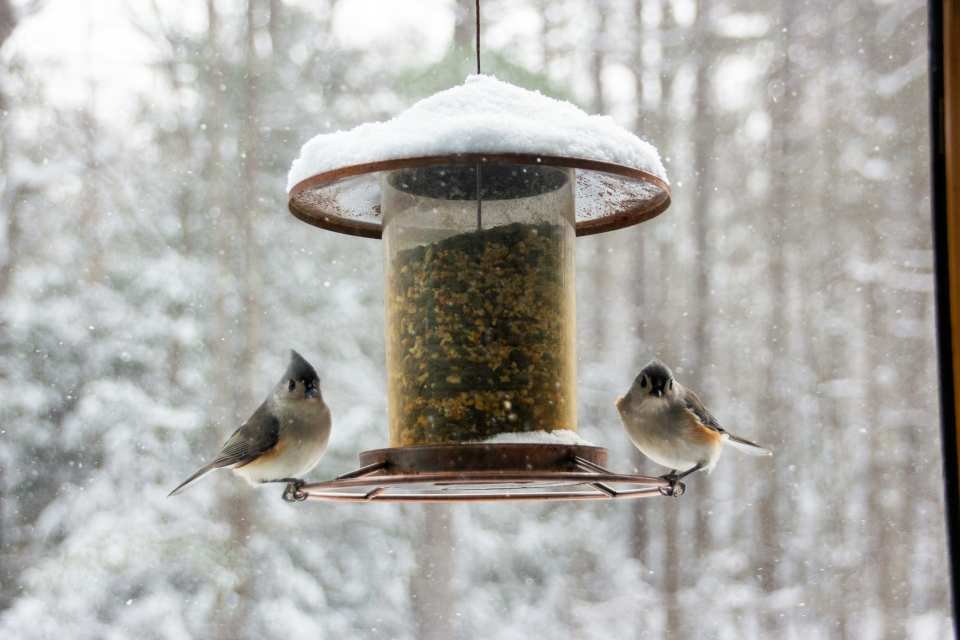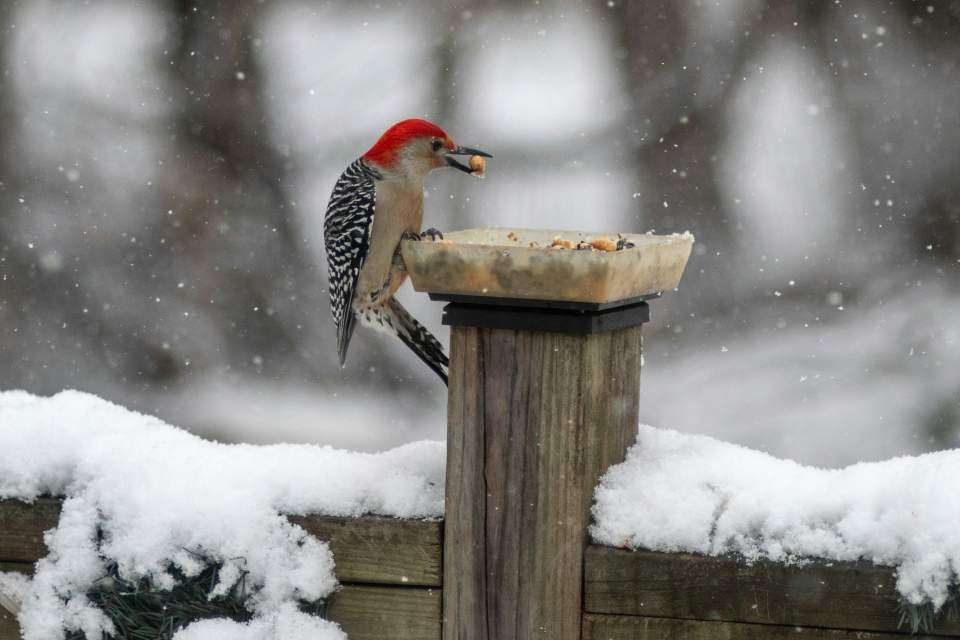Winter hits, and suddenly your backyard looks like a ghost town. No chirping, no fluttering, just… silence. I remember staring out my window last January, coffee in hand 🙂, wondering where all the birds went. Turns out, they didn’t abandon me, I just wasn’t giving them a reason to stick around.
If you want to know how to attract birds during winter, it’s not about becoming a full-time bird butler. It’s about creating a backyard habitat that gives them shelter, water, and natural food sources—so your yard becomes a lively, bird-friendly refuge that actually supports their survival instead of just handing out snacks.
- Leave seed heads on perennials for natural food.
- Plant berry-producing native shrubs for food and shelter.
- Add evergreen shrubs and brush piles for winter cover.
- Provide fresh water daily, even in freezing weather.
- Create safe travel corridors connecting feeding, water, and shelter areas.
Rethinking Your Winter Yard
Let’s get real for a second. Most of us treat our yards like outdoor carpet, mow it, rake it, keep it tidy, repeat. But that sterile approach is basically a desert for wildlife. Winter birds need messy, layered, complex spaces that mimic natural habitats.
Think about what a bird faces in winter. Their usual food sources disappear under snow, water freezes over, and finding shelter becomes a survival game. The birds that stick around during cold months are tough little survivors who need actual habitat, not just a feeding station.
When you create a genuine bird-friendly winter garden, you’re giving these birds what they actually evolved to use. And honestly, the payoff is worth it. I’ve had mornings where I counted seven different species around my yard before finishing my breakfast. IMO, that beats staring at a perfectly manicured lawn any day.
Native Plants: The Foundation of Everything
Why Native Plants Matter So Much
Research from the Smithsonian has shown something pretty remarkable: yards need at least 70% native plants to support stable bird populations. The reason? Over 90% of herbivorous insects only eat native plants, and those insects are what feed baby birds during breeding season and provide crucial protein year-round.
This isn’t just about being environmentally conscious, it’s about creating functional habitat. Non-native ornamentals might look pretty, but they’re basically food deserts for wildlife. Native plants create the food web that birds depend on, and that matters even more during winter when resources become scarce.
Let Your Garden Go to Seed
Want to know the easiest way to attract birds? Stop deadheading everything in fall. Seriously. Those seed heads you’re cutting down are natural food sources that birds have been eating for thousands of years.
Coneflowers, black-eyed Susans, and sunflowers provide seeds all winter long. I deliberately leave mine standing, and goldfinches will perch on those dried stems like they’re at an all-you-can-eat buffet. It looks a bit wild, sure, but it’s functional beauty. Native grasses like little bluestem and switchgrass also provide tons of seeds that sparrows and juncos love.
The first year I stopped my fall cleanup routine, my neighbor gave me this look like my yard was becoming a wasteland. Fast forward to December, and she’s asking why her yard is empty while mine is buzzing with activity. Native plants for winter birds aren’t just decoration, they’re survival resources.
Berry-Producing Shrubs Are Gold
If you’re planting anything this year, make it berry-producing native shrubs. Winterberry holly, viburnum, serviceberry, and dogwood create food sources that persist through the coldest months. I planted winterberry along my fence line five years ago, and every December it’s loaded with bright red berries that feed robins, cedar waxwings, and mockingbirds until late February.
These shrubs do double duty too. They provide food and shelter in the same package. Birds will roost in the branches and snack on berries without having to travel between resources. That’s huge when temperatures drop and energy conservation becomes critical.
The trick is choosing varieties that hold their fruit into winter rather than dropping everything in fall. Audubon’s native plant database can help you identify which species work best in your specific region, just enter your zip code and you’ll get recommendations tailored to your local bird populations.
Creating Shelter for Birds in Winter
Evergreen Shrubs Build Bird Neighborhoods
Here’s something that completely changed my winter birdwatching tips game: evergreen shrubs for birds. These provide dense cover that protects birds from wind, snow, and predators. We’re talking about creating actual safe spaces, not just visual interest for your landscaping.
Juniper, holly, arborvitae, and native pine create perfect hiding spots and roosting areas. I planted a mixed row of junipers and hollies along my property line, and they’ve become bird apartment buildings. On particularly nasty winter days, I’ll see a dozen birds huddled in there, riding out the storm in relative comfort.
The key is planting them in clusters or rows to create real shelter for birds in winter. One lonely shrub doesn’t cut it,think about building actual safe zones where birds can roost overnight and escape from hawks during the day. I space mine about 4-6 feet apart so they eventually grow together into a continuous windbreak.
Brush Piles Are Underrated Magic
This might be the most controversial thing I’ll tell you, but brush piles for winter birds are incredibly valuable. I’m not talking about dumping your trash in the corner, I mean strategically placed piles of branches, prunings, and woody material that create shelter and foraging habitat.
I started building mine after a big storm dropped branches everywhere. Instead of hauling them to the curb, I piled them in a back corner of my yard, crisscrossing larger branches on the bottom and adding smaller twigs on top. Within days, sparrows, wrens, and towhees were using it constantly.
Brush piles offer protection from predators and weather while also attracting insects that overwinter in the wood. Birds pick through the pile finding larvae and bugs that would otherwise be impossible to access. According to Penn State Extension, these structures provide essential habitat for small mammals, amphibians, and numerous bird species that rely on them for both shelter and food sources.
Yeah, it’s not the most manicured look, but who cares? My neighbors with their sterile, perfectly mulched yards get maybe a quarter of the bird activity I do. FYI, nature doesn’t do neat and tidy, it does functional and abundant.
Water: The Most Overlooked Essential
You know what’s harder to find than food in winter? Liquid water. Seriously, this is something most people completely ignore, but it’s absolutely critical for attracting migratory birds in winter and keeping residents healthy.
Birds need water year-round for drinking and bathing. Yes, bathing, even in winter. Clean feathers insulate better than dirty ones, so birds will still take quick baths even when it’s freezing outside. The bird that doesn’t maintain its feathers properly doesn’t survive February.
Here’s the good news: you don’t necessarily need fancy heated birdbaths. I’ve had success with simple solutions like placing a dark-colored dish in a sunny spot where it stays liquid longer. Black absorbs heat, and even weak winter sun can keep water thawed for a few hours daily.
Another trick? Refresh the water multiple times a day if you’re home. I dump out the ice and add fresh water during my morning coffee and again in the afternoon. It’s maybe two minutes of effort total, but it makes a massive difference.
If you do want to invest in a heated option, go for it, it’ll definitely increase bird activity. But don’t let budget stop you from providing water. Even a simple dish that you maintain regularly will attract birds that might otherwise skip your yard entirely.
Creating Safe Winter Travel Corridors
Birds don’t just need one spot, they need safe winter travel corridors to move between feeding areas, water sources, and shelter. This is especially important in suburban areas where habitat gets fragmented by houses, roads, and those awful expanses of lawn.
Think about how your yard connects (or doesn’t connect) to nearby green spaces. I worked with my neighbor to create a continuous line of shrubs between our properties that links to a small woodland area beyond. Now birds can move safely through without having to fly across wide-open spaces where hawks patrol.
This concept is bigger than just your property line. Look at the whole neighborhood from a bird’s perspective. Are there trees, shrubs, and covered areas that create pathways? Or is everything so spread out that birds have to risk exposure every time they move?
You can’t fix everything, but you can make your section of the corridor better. Plant that hedgerow. Let that corner go wild. Add stepping-stone shrubs that connect different areas of habitat. Every bit of cover helps create a safer network for birds navigating winter landscapes.
The Year-Round Garden Approach
Leave the Leaf Litter
Stop bagging your leaves. Seriously, just stop. Leaf litter creates habitat for the insects and larvae that birds hunt during winter. Those bugs are protein sources that help birds survive when temperatures plummet and energy demands spike.
I rake leaves into my garden beds and around shrubs rather than removing them. It looks intentional enough that neighbors don’t think I’ve given up on life, but it provides incredible foraging opportunities. Towhees, thrashers, and sparrows spend hours scratching through leaf litter hunting for food.
Plus, those leaves break down and improve your soil, so you’re getting multiple benefits from literally doing less work. It’s the rare win-win where laziness actually helps wildlife 🙂
Don’t Cut Everything Back in Fall
Modern gardening advice tells you to cut back perennials in fall for a “clean” look. Ignore that advice. Dead plant stalks provide insect larvae, seeds, and structural habitat that birds use all winter.
I leave everything standing until spring. My asters, coneflowers, Joe Pye weed, and grasses create this beautiful skeletal garden that catches snow and provides food and cover. It’s not messy, it’s textural and functional. And when goldfinches are perched on those dried coneflowers in January, extracting seeds like tiny acrobats, you’ll understand why this matters.
Some of my best winter bird moments have happened because I didn’t clean up. A Carolina wren spent an entire December living in my stacked tomato cages surrounded by dried stems. Would that have happened in a bare, cleaned-up bed? Not a chance.
Reducing Window Hazards
If you’re creating habitat that attracts birds, you’re responsible for making sure your yard doesn’t become a death trap. Recent research published in 2024 revealed that building collisions kill over one billion birds annually in the United States, and residential buildings account for a significant portion of these deaths.
I use UV-reflective decals that birds can see but don’t ruin my view. After watching a cardinal slam into my window and shake it off (luckily), I got serious about this. You can also use screens, external shutters, or even soap markings if you’re on a budget.
The key is breaking up the reflection so birds don’t see clear flight paths through or behind windows. It’s not about making your house ugly, it’s about making it visible to birds traveling through your newly attractive habitat. Studies show that treatments need to be on the outside of windows to be effective, as interior solutions don’t adequately reduce reflections.
What This Actually Looks Like
My yard isn’t magazine-perfect, and that’s exactly the point. I’ve got evergreen clusters in the corners, a hedgerow along one side, native perennials going to seed, a brush pile behind the garage, and leaf litter in all my beds. It’s layered, textured, and alive.
Last winter, I documented 23 different species using my yard between December and March. Cardinals, chickadees, nuthatches, juncos, goldfinches, woodpeckers, titmice, the gang was all there. Not because I was running a bird cafeteria, but because I created actual habitat that supported their natural behaviors.
The best part? These birds will remember your yard. They’ll return year after year and bring their offspring. You’re not creating dependency, you’re restoring function to a landscape that probably hasn’t worked properly for wildlife in decades.
There’s something incredibly peaceful about watching birds on a snowy morning in a garden that’s actually designed for them. The world slows down, and you get these little moments of connection with nature that remind you not everything has to be complicated. Sometimes it’s just you, a cup of coffee, and a chickadee exploring your brush pile.
Making It Happen
Look, creating a winter bird habitat takes some effort upfront, but once your plants are established and your structure is in place, nature mostly runs the show. You’re not committing to daily maintenance, you’re committing to better design choices and resisting the urge to over-manage everything.
Start small if you need to. Plant a native shrub or two. Leave your seed heads standing this fall. Build a small brush pile. Add a water source and commit to checking it daily. Build from there as you figure out what works for your space and which birds are in your area.
There’s no perfect formula, just keep experimenting and paying attention to what birds respond to. Every yard is different, every region has different species, and your personal style will influence how you approach habitat creation. Research from the Cornell Lab of Ornithology confirms that even getting your yard to around 70% native plants delivers most of the benefits to birds and other wildlife.
And hey, when your friends complain about their boring, lifeless winter yards, you’ll be over here running a thriving bird sanctuary that actually functions like nature intended. Sometimes the best part of creating a bird-friendly winter garden is getting to be just a tiny bit smug about your bird count compared to everyone else’s. Not that I’m competitive about it or anything… 🙂
Give your feathered neighbors real habitat this winter. They’ll repay you with color, activity, and life when everything else looks dead and frozen. That’s a pretty good deal if you ask me.




